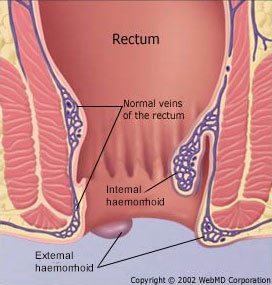- 2094, Dividing Rd, Phase 2, Urban Estate Dugri, Ludhiana
- +91 8872036060
- harpaldr@yahoo.com
PILES CLINIC
Hemorrhoids/piles are swollen veins in the anal canal. Veins can swell inside the anal canal to form internal hemorrhoids/piles. Or they can swell near the opening of the anus to form external hemorrhoids/piles. One can have both types at the same time. The symptoms and treatment depend on the type and stage of piles.
What causes hemorrhoids/piles?Normally, tissue inside the anus fills with blood to help control bowel movements. If you strain to move stool, the increased pressure causes the veins in this tissue to swell and stretch. This can cause hemorrhoids/piles. Constipation also leads to straining and can increase pressure on veins in the anal canal. Being overweight can also lead to hemorrhoids/piles. Pregnant women can get hemorrhoids/piles during the last 6 months of pregnancy because of increased pressure on the blood vessels in the pelvic area. Straining during labor can make hemorrhoids/piles worse.
What are the symptoms?The most common symptoms include: Painless Bleeding during bowel movements. You might see streaks of bright red blood on toilet paper after you strain to have a bowel movement. Piles can become painful in later stages. If hemorrhoids/piles bulge out, you also may see mucus on the toilet paper or stool.External hemorrhoids/piles can get irritated and clot under the skin, causing a hard painful lump. This is called a thrombosed, or clotted, hemorrhoid.
Piles SurgeryA number of surgical techniques may be used if conservative management and simple procedures fail. All surgical treatments can be associated with some degree of complications including bleeding, infection, anal strictures and urinary retention. There may also be a small risk of fecal incontinence.
Excisional hemorrhoidectomy is a surgical excision of the hemorrhoid used primarily only in severe cases like grade 3 hemorrhoids (Prolapse upon bearing down and requires manual reduction) as compared to rubber band ligation. It is the recommended treatment in those with a thrombosed external hemorrhoid if carried out within 24–72 hours.
Stapled hemorrhoidectomy also known as stapled hemorrhoidopexy, is a procedure that involves the removal of much of the abnormally enlarged hemorrhoidal tissue, followed by a repositioning of the remaining hemorrhoidal tissue back to its normal anatomic position. It is generally less painful and is associated with faster healing compared to complete removal of hemorrhoids. However, the chance of symptomatic hemorrhoids returning is greater than for conventional hemorrhoidectomy and thus it is typically only recommended for grade 2 (Prolapse upon bearing down but spontaneously reduce) or 3 (Prolapse upon bearing down and requires manual reduction) disease.



